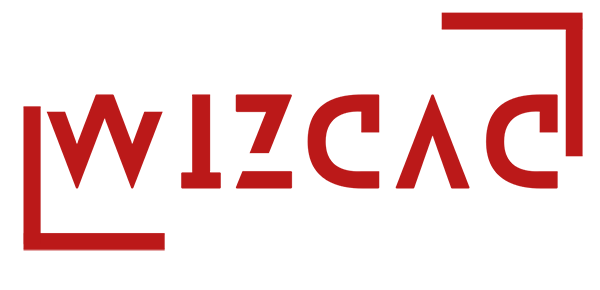Harnessing the Digital Age for Better Sleep: A Comprehensive Guide

This article examines practical strategies for leveraging the digital age to improve sleep quality. By thoughtfully integrating modern tools and apps, we can work towards a restful night and counter the paradox of sleep disruption caused by technology. In this article, we explore how the digital age has changed the face of our sleep and provide practical advice for using technology to improve sleep.
In the whirlwind of our modern lives, dominated by technology, our sleep inevitably falls by the wayside.
But this is a great danger because sleep deprivation can cause serious illnesses, and, given that sleep is free, it is, in short, the best tool at our disposal.
Now that we’ve discussed technology, let’s examine how technology and emerging artificial intelligence can improve sleep.
For a comprehensive guide on tools and techniques that promote better sleep, exploring a range of options can help tailor the perfect sleep-enhancing strategy for you.
The impact of technology on sleep
The digital age, characterized by screens, gadgets, and constant connectivity, has dramatically changed the quality and quantity of our sleep.

The blue light emitted by screens suppresses the production of melatonin, a hormone necessary for regulating sleep cycles. This hormone delays the onset of sleep and reduces its depth.
In addition, the constant influx of information and the habit of scrolling through social media or emails before bed can lead to mental stimulation that is counterproductive to relaxation.
Using technology for sleep: A two-pronged approach
- Paradoxically, the first step to using technology for better sleep is to limit its use. Experts recommend establishing a mandatory period for digital detox, usually an hour before bedtime, to mitigate the adverse effects of blue light and excessive mental stimulation. During this time, engage in relaxing activities such as reading a book, meditating, or taking a warm bath.
- Use sleep improvement tools: While digital detox is critical, some tech tools and apps, from sleep trackers and smart mattresses to white noise machines and apps designed to promote relaxation, can improve sleep quality. This section looks at a few critical solutions that are effective.
So, which applications can we use to improve sleep?
Sleep apps have become powerful allies in the quest for better rest, offering features such as sleep tracking, guided meditation, and ambient sounds. Here are a few notable ones:
- Sleep Cycle: This app analyzes your sleep patterns and wakes you up during your lightest sleep phase, ensuring you feel refreshed.
- Calm: Besides its vast selection of guided meditations, Calm offers sleep stories and relaxing music to ease you into a deep sleep.
- Headspace: Known for its mindfulness and meditation resources, Headspace also provides sleep meditations and soundscapes to improve sleep quality.
Technical tools for a sleep-optimized environment
Creating a sleep-friendly environment is just as crucial as your bedtime routine. Several innovative technical solutions can help:
- Smart Light Bulbs: These bulbs allow you to simulate a natural sunset in your bedroom, gradually dimming the lights to promote melatonin production.
- White Noise Machines: These devices can mask disruptive noises by providing a consistent auditory backdrop, making falling and staying asleep easier.
- Smart Mattresses: Equipped with sleep tracking and temperature control, smart mattresses adjust to your body’s needs, enhancing comfort and sleep quality.

Navigating the maze of information
With many options available, choosing the right tools and applications can be overwhelming. When choosing, consider your specific sleep concerns and preferences. For example, if you find it challenging to quiet your mind at night, meditation and sleep story apps might be most beneficial for you. If your sleep is often disturbed by outside noises, a white noise machine may help.
Sensible integration of sleep-enhancing technologies
While technology offers valuable solutions, conscious integration is vital. Avoid becoming too dependent on apps and devices to the point that they start to have the opposite effect, contributing to stress rather than alleviating it. Use these tools as part of a broader approach to improving sleep that includes good sleep hygiene practices, such as maintaining a consistent sleep schedule and creating a comfortable sleep environment.
The role of diet and exercise in conjunction with sleep technique
Diet and exercise play a crucial role in sleep quality. A balanced diet and regular physical activity can significantly improve sleep, while certain foods and sedentary lifestyles can impair it. Combining a healthy lifestyle with sleep technology creates a synergistic effect that enhances sleep quality.

Conclusion: Embracing the Future of Sleep Technology
As we continue to navigate the complexities of the digital age, the relationship between technology and sleep need not be adversarial. We can reclaim the restorative sleep our bodies and minds crave by employing a strategic approach that includes a pre-sleep digital detox, utilizing sleep-enhancing tools, and integrating these technologies mindfully. The future of sleep technology is bright, offering innovative solutions that promise to improve sleep quality and enhance our overall well-being. As we embrace these advancements, we unlock the door to a healthier, more rested existence in our technology-driven world.
Final Thoughts
Improving sleep quality in our technology-saturated era is both a challenge and an opportunity. We can turn the tables on tech-induced sleep disturbances by leveraging digital-age solutions thoughtfully and judiciously. The journey to better sleep is personal and requires a tailored approach, but it’s within reach with the right tools and strategies. As we continue to explore and integrate these technological advancements into our nightly routines, we pave the way for enhanced sleep and improved health and vitality in our daily lives.






